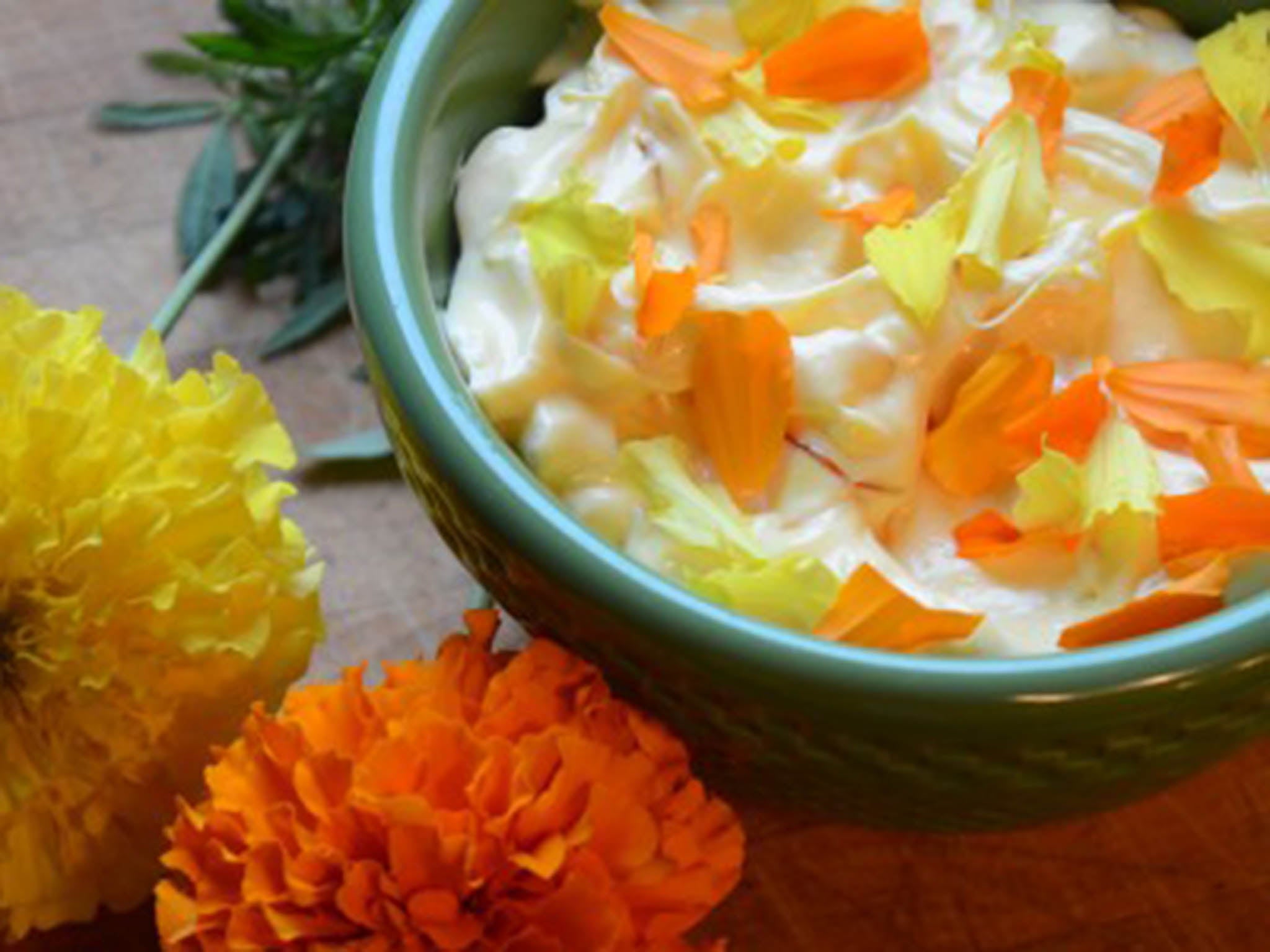In the kitchen, flowers aren’t just tabletop decorations
Cooking with flowers is delightful but make sure they are edible, advises Barbara Damrosch

Your support helps us to tell the story
From reproductive rights to climate change to Big Tech, The Independent is on the ground when the story is developing. Whether it's investigating the financials of Elon Musk's pro-Trump PAC or producing our latest documentary, 'The A Word', which shines a light on the American women fighting for reproductive rights, we know how important it is to parse out the facts from the messaging.
At such a critical moment in US history, we need reporters on the ground. Your donation allows us to keep sending journalists to speak to both sides of the story.
The Independent is trusted by Americans across the entire political spectrum. And unlike many other quality news outlets, we choose not to lock Americans out of our reporting and analysis with paywalls. We believe quality journalism should be available to everyone, paid for by those who can afford it.
Your support makes all the difference.All summer I bring in flowers from the garden and wild ones from the fields. Sometimes they're in a bouquet, whose bright colors bring the outdoors in. But often they’re just some odd treasure that appeals to me – a handful of daisies picked by a grandchild or one neon-violet artichoke blossom. I’ll stick it in a glass on the window sill above the sink, along with glasses of herbs such as parsley and mint. Some, like those herbs, are there for the eating, too.
Cooking with flowers is delightful but complex. You don’t go out and pick a peck of petals unless you are, say, drying chamomile blossoms for a winter's supply of tea. Few of us have the time to craft elegant ice cubes in which flowers are suspended or to roll cylinders of flower butter, frozen and cut into disks to melt artfully atop your steak.
Still, I like to scatter a few petals on a dish that needs an accent. Petals from a single orange calendula, strewn over plain green lettuce, make up for a lack of tomatoes. Once I put together a salad of sliced cucumbers, onions and fennel, to serve at a potluck. The sour cream and yogurt with which I dressed it was blandly white until a dismembered dandelion perked it up. We appreciate food with all our sensory organs, including the eye.
Some petals have an appealing flavour, too. The globe of a chive blossom, picked apart and scattered over something, is a little onion bomb, zesty and bright purple to boot. Lavender florets are also high-impact if you pluck each one carefully, leaving the less-appetising calyx behind. Nasturtiums are a little peppery and roses a little sweet. Daylilies are also sweet if very fresh, with a bit of crunch.
The flower eater's dilemma, however, is that while many are suitable for consumption, many others are, to one degree or another, toxic. How can you tell? It’s wise to consult a book on the subject, such as the classic Edible Flowers: From Garden to Palate by Cathy Wilkinson Barash. Online, flowers that frequently appear on the “edible” lists are worth trying, and those on the “toxic” lists should be avoided. But those lists aren’t always complete. For instance, Wikipedia’s long list of poisonous flowers does not include daphne, a highly toxic shrub, so absence should not give a flower a green light.
A history of a flower's traditional use is reassuring. Squash blossoms are widely used in Latin American soups, and in Italy are deliciously stuffed with cheese, then breaded and fried. I have served platefuls of this delicacy, and no one's tummy has ever complained. But some people have sensitivities to particular flowers, and, as with any new food, it is best to try a modest amount at first.
You would obviously want to avoid any flower that might have been sprayed with a pesticide or any other chemical. The best way is to know the cook's garden practices or to grow your own, as commercial flowers normally are not considered food. Flowers gathered along roadways, exposed to car fumes and possibly to herbicidal sprays, should be avoided.
Yesterday I was making my lazy version of aioli by steeping saffron in a little warm water for flavour and a rich yellow colour, adding fresh garlic I had grated with a Microplane and whisking it into what is sometimes homemade mayonnaise but in this case was Hellmann’s. Then I stirred in yellow and orange marigold petals and also sprinkled some on top. We ate this with ham.
Winter will be here soon, and I'm seriously thinking of growing a few potted marigolds on that kitchen window sill. The aioli was that pretty and that good.
Damrosch is the author of ‘The Four Season Farm Gardener's Cookbook’; her website is fourseasonfarm.com
Join our commenting forum
Join thought-provoking conversations, follow other Independent readers and see their replies
Comments